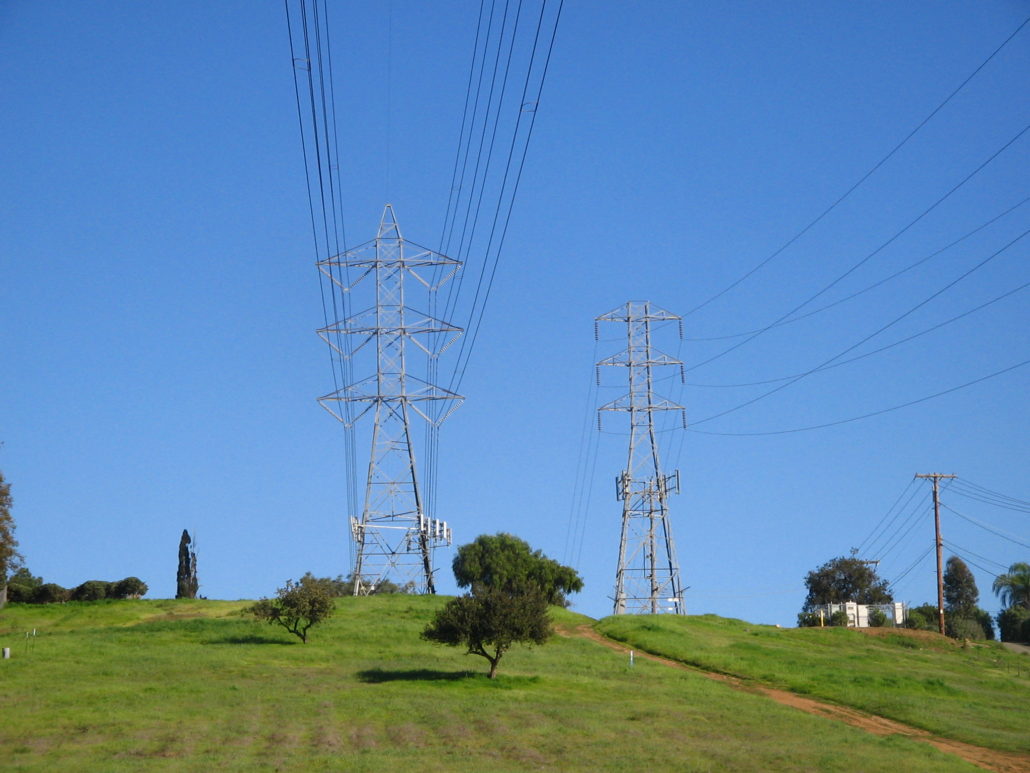New Regulations Forcing Compliance
California utility companies have been working to address their liability to the growing risk for massive wildfire events. The California Public Utilities Commission, CPUC, has stringent rules and guidelines for maintenance and mitigation, and has often held utility companies liable to the damages caused by their equipment starting fires. Senate Bill 901, named The Utility Wildfire Mitigation Plans Bill, outlines further requirements for utilities to provide the state with plans to prevent, combat, and respond to wildfires in their service territories. It allows for CPUC to review and modify these plans before the utility is allowed to adopt the plan. Read on to learn how these companies plan to combat this ever increasing threat.
A Tale of Two Utilities

San Diego Gas and Electric transmission lines over well managed grassland.
San Diego Gas and Electric began an extensive wildfire program that stemmed from three wildfires in 2007 that SDG&E equipment was found to have started. The company was found liable for damages to over 1,300 homes, having to pay over $2.4 billion in lawsuits related to the damages. Since then, SDG&E has invested over $1 billion in prevention and resiliency across its energy grid.
This includes:
- Hardening the infrastructure by replacing wood poles with fire-resistant steel poles.
- Increasing vegetation management, specifically targeting trees and other vegetation that could come in contact with power lines.
- Contracting a heli-tanker to assist other air resources to knock down fire starts before they become well established.
- Building a network of 177 weather stations in fire-prone areas and hired an in-house meteorology team to monitor and analyze fire weather conditions. Given their analysis, SDG&E may elect to preemptively cut power to at-risk areas during extreme winds or other extreme fire weather events.
- Installing 16 high definition cameras on ridge tops across the county to assist in monitoring and fire detection.
- Installing Falling Conductor Protection, which cuts off power to broken power lines before they contact the ground.
- Increasing community outreach and education.
SDG&E is a champion of many of these efforts and was recognized in 2018 by winning the Edison Electric Institute’s 2018 Edison Award for its work to enhance wildfire preparedness.
Compared to the work SDG&E has been working toward for over a decade, Pacific Gas and Electric, PG&E, has lagged way behind. Their current plan is to implement much of what has already been completed by SDG&E by 2022. This includes adding weather stations, enhancing vegetation mitigation, installing cameras for real-time monitoring, increasing tower and pole inspections, and installing more resilient poles and power lines. It also opened a Wildfire Safety Operations Center in 2018. PG&E has been hit hard with liability the past two years, as it was found responsible for starting several of California’s largest and most damaging fires in history. The company filed for bankruptcy in January, as it has a potential $30 billion wildfire liability attached to these fires. It is still unknown what will come out of the bankruptcy, but the utility will need to continue to operate in some form to serve its customers. It is impossible to know whether implementing these programs years ago would have prevented these fires, but adopting the plan as quickly as possible is at least some good news for people still living in fire-prone regions of PG&E’s district.
Sources:
http://firetechsummit.cpuc.ca.gov




One Comment